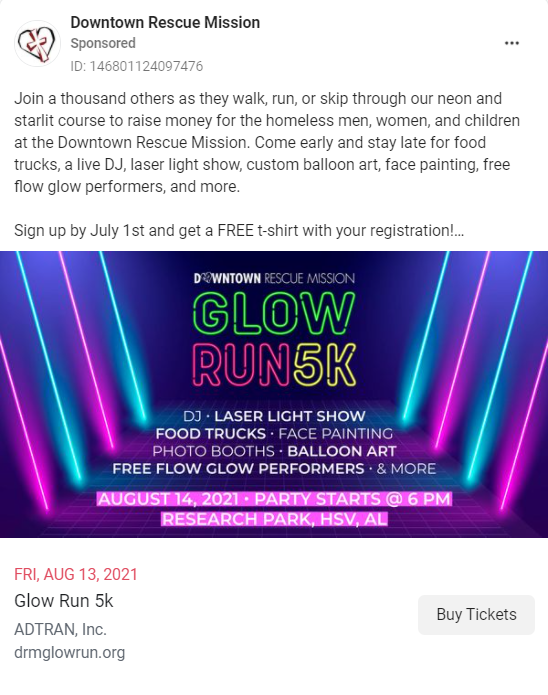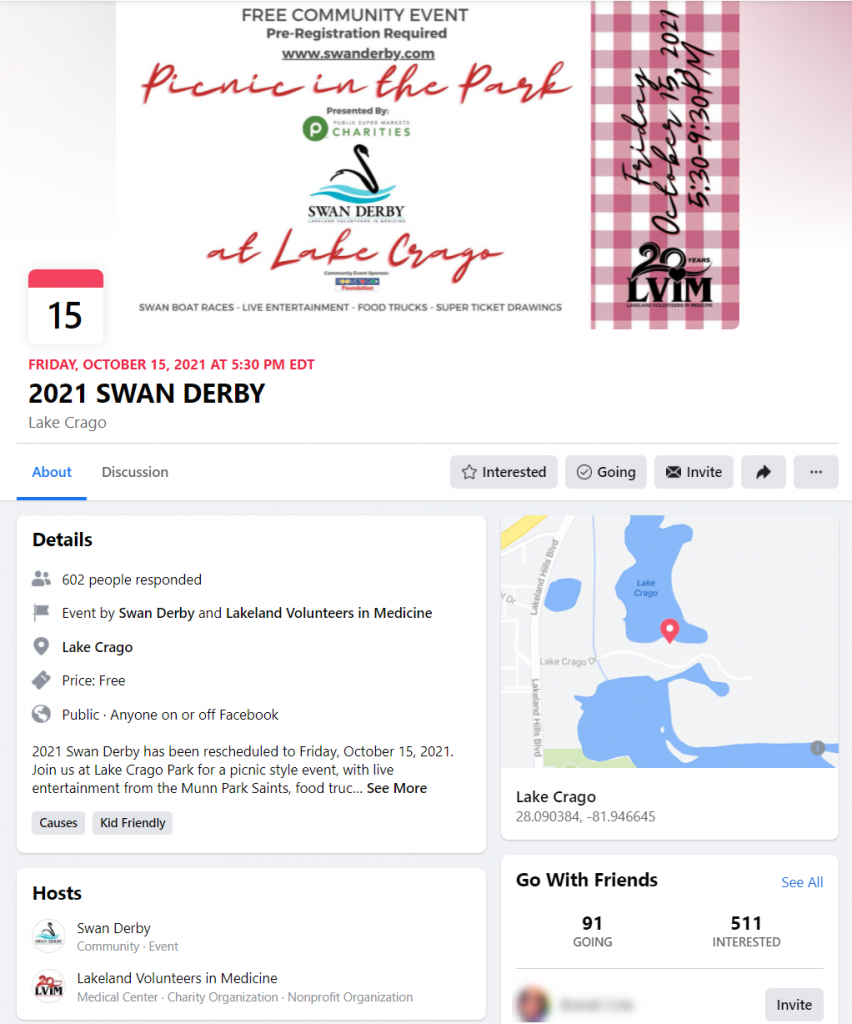How’d your last peer-to-peer event go? Could you use more participants next time? If you want to attract more participants to your peer-to-peer fundraising event, consider how you’re marketing it! Where will your audience see your event advertised? Are you sending out invites? What other ways can you get more eyes on your fundraiser? Read on for Qgiv’s peer-to-peer fundraising best practices for event marketing.
Determine who your audience is
Your ideal audience is unique to your nonprofit and your peer-to-peer fundraising event. You’re looking for people who care about and will support your nonprofit’s mission and are interested in the event you’re hosting. Sit down and write out who your ideal participants are for your peer-to-peer fundraising event. Then determine what you know about your ideal participant. What do they value? Where do they live? And, most importantly, how can you reach them to tell them about your fundraiser?
Find out where your audience is
Your audience is as unique as your nonprofit. Once you’ve determined your ideal audience, consider what you know about them and the media they consume. Knowing where you can find your audience makes it easier to take a targeted approach to your peer-to-peer event marketing.
- Direct mail appeals are most successful with Baby Boomers. Almost 50% of Boomer donors prefer to give with a physical check.
- 39% of Gen X respondents said they’re most likely to give as a result of a post they see on Facebook or other social media channels.
- 27% of Millennial respondents wanted to see updates about the causes they support on social media. That doesn’t mean they don’t appreciate a personal touch; the next most popular method of receiving updates was through personal phone calls.
- 33% of donors in this age group prefer to give in response to social media channels, and 29% prefer to give via text messages.
A particularly helpful place to start is with getting to know the best ways to reach each generation. Luckily our Generational Giving Report goes over this information at length!
Social media marketing tips
Social media marketing is a great channel to promote your event on. Why? Members of each generation use social media! That said, different social media platforms are more popular with different age groups. For instance, Baby Boomers are more likely to be on Facebook while Millennials and Gen Z folks prefer other platforms like Instagram and TikTok.
So how can you reach your target audience on social media?
Start with a Facebook event page
The easiest way to get started is to create an event page on Facebook. Why Facebook? According to our Navigating the Unknown report, Facebook was the number one channel that motivated donors to make gifts. On top of that, your supporters can easily share your Facebook event page to their social circles, even outside of Facebook! That helps get more eyes on your event, which means more registrants and more donations for your cause.
Ask supporters to share your event
Social media relies on views to make your promotion effective. However, nonprofits don’t always have social media advertising budgets. If that sounds like your organization, don’t discount the power of organic reach! Your supporters want to help you out, so when you post about your event on your social media profiles be sure to ask them to share the event information.
As your supporters share your content it gets seen by more people in their social circles. But most social platforms also will recognize posts that get a lot of likes, comments, and shares and will show those posts to more people.
Social media advertising
If your budget does allow for social media advertising, how can you make your ad spend effective? Consider the following:
Target your ads to your ideal audience
The nice thing about social media is everyone’s on it! The bad thing about social media is that means ad spend can be expensive if you’re wanting to promote your event to just anyone and everyone. How do you remedy this? By setting up targeted ads aimed at your ideal audience.
Social media knows a lot about its users. Many users voluntarily supply these sites with their name, age, geographic location, marital status, and more. That means your ads can be directed at just the folks who meet your very specific criteria. This is obviously more effective for conversions than marketing to everyone and hoping for the best.

Why? Because people respond to ads that are relevant to them. If you want to reach your ideal audience they’re the ones you need to seek out and show your ads to. This granular post means your posts will be relevant to more of the users viewing your ads. This makes it easier to recruit the folks you want to see at your event.
Pay attention to geographic location
For hybrid and in-person events, it helps to pay attention to geographic location when creating your ads. Because you’re selling an event experience rather than a product, location in proximity to you and your venue matters. When paying for display ads on social media limit the reach of those ads to your geographic location.
If you’re hosting a completely virtual event, geographic location means less because anyone can attend from anywhere. That said, you’ll want to make sure your ad includes the time zone the virtual festivities will take place in. If reaching out regardless of geographic location it pays to be especially granular in your other search parameters to make sure your ad is reaching people who would be interested in attending an event in support of your organization.
Evaluate ad performance and make adjustments
So you’ve launched a social ad campaign to market your peer-to-peer event. Now what? Well, you’ll need to evaluate the effectiveness of that ad spend and make adjustments to make sure you’re getting the best return on your investment.
Most social media sites provide ad performance data when you advertise on their platforms. A lot of that information can be really confusing. So to gauge effectiveness look at the following metrics.
Must-know metrics
Impressions: This is the number of times your ads are viewed by others. By itself, this data is helpful to know about how many users fit your target demographic. If the number is too low your ideal audience may be too low. You can remedy this by trying to ease up on some of the restrictions, like expanding the target age.
Click-Through-Rate (CTR): This is a measure of the number of times those who view your ads click on the ad and get taken to your website. This is determined by dividing the number of clicks by the number of impressions then multiplying the number by 100 to get the click through rate percentage.
Conversion Rate: This is a measure of how many people clicked through to your website then registered or donated to your event. You want your conversion rate to be as high as possible. This means that people are taking the action you want. This metric speaks to the effectiveness of your ad and your ability to target your desired audience.
Return On Investment (ROI): That said, you could have a great conversion rate but still be spending too much for the impressions. Once you know what your conversion rate is take a look at your costs and determine if you’re spending too much for the results you’ve had. At your current rate, will you be able to stay within your budget and meet or exceed your recruitment goals? If not, determine how you can refine your ad or discontinue less effective ads to focus on the ones that are working best instead.
Email marketing tips
The basics
According to Campaign Monitor’s Data-Backed Guide to Nonprofit Marketing, email was the preferred way donors specified they want to hear from nonprofits. So plan for an email marketing campaign to coincide with your other avenues for peer-to-peer event marketing. Not sure how to get started with an effective email campaign? Use these tips!
When it comes to crafting the perfect emails to market your peer-to-peer event, it’s as simple as starting with an email invite. For email marketing, you’ll be reaching out to your existing supporters. So pull a list from your CRM of past attendees and current supporters and send them an invitation!
Your invitation should include the event details, why you’re hosting the fundraiser, and include the link to your event page. A personalized event email can be the perfect way to reach your supporters without investing a lot of time and money.
After the invitation, it helps to send follow-up emails reminding registrants when your event is taking place and even sending second and third chance reminders to register.
Want your emails to be more effective? Use these tips to improve your email performance.
Advanced email marketing tips
Segment your email contact lists based on people’s experiences with you. A few segments to consider using when marketing your event include:
- Existing donors
- Existing volunteers
- Past participants (if your event is more than 1 year old)
- General emails
Then, send a few emails to various segments during your campaign. Some good emails to schedule include:
- Teaser emails sent before registration opens
- Two or more invitations to register sent during the early stages of registration
- An appeal for donations as your participants start building momentum
- An invitation to your in-person event (if you’re having one)
Your emails should always include a link directly to your event page. If possible, make your email match your event and organization branding so your supporters will click with confidence!
Lastly, study your email performance and make sure your emails are getting opened, read, and clicked on. If they’re not, make adjustments or find a different way to reach your supporters.
Direct mail tips
Direct mail is still a tried and true way of reaching supporters and getting them to join you at your peer-to-peer event. The physical reminder can be a big help in inspiring guests to register and attend. Use these tips for a great direct mail marketing strategy for your next event!
Send save-the-dates, invites, and reminders
Sometimes the best way to reach supporters is through the mail. Not only can nonprofits make use of special bulk mailing rates for letters and postcards, a letter gives you the chance to reach people who haven’t responded to emails or don’t use social media.
Your event mail can be most effective with a three step approach.
First, a save-the-date postcard to past attendees can be helpful for reminding them to attend this year’s. They can hang the postcard from the fridge or even share it with others that may be interested (after adding it to their calendar of course!).
Next, send the official invitation. This can include details about your event and the steps for how to register. The direct mail piece should reflect your event and organization branding and be personalized to the recipients.
For a comprehensive look at ways to get more eyes on your peer-to-peer event, check out our eBook, Marketing Your P2P Event, for tons of great advice for making the most of your event marketing efforts.
Conclusion
Marketing your event is one of those peer-to-peer fundraising best practices that too often goes overlooked or is done haphazardly. Instead of trying a bit of everything to see what marketing strategies stick, tailor your marketing efforts to the methods that resonate with your target audience.
When you’ve identified your target audience, figure out where they’ll be and take a strategic approach to getting your message where they’ll see it. Social media, email, and direct mail can provide great visibility to your event. Still not enough? Think outside of traditional marketing to get more eyes on your event.
Want more peer-to-peer fundraising best practices? We’ve got you covered! Check out our peer-to-peer ultimate guide for tons of tips and best practices to boost your peer-to-peer performance.




